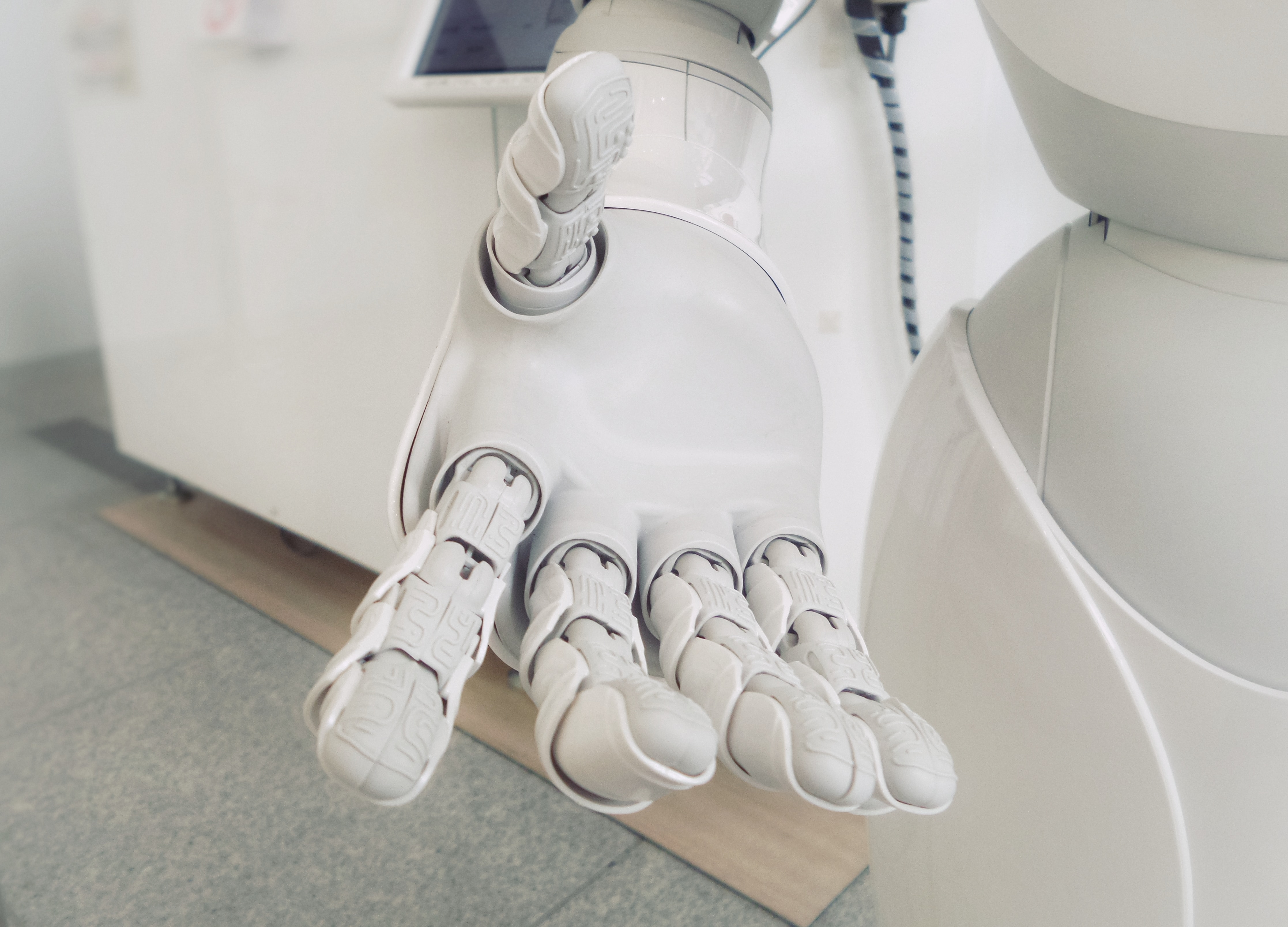This is an article written by Daniel Steffen, Senior Investment Manager of IBB’s Life Sciences team. Recently he shared a few insights into Digitization of Elderly Care and how novel solutions can relieve both caregiving relatives and care professionals as well as improve quality of live for elderly at home or in care facilities. However, there are some areas of application, where first solutions already are on the market, but not in broader usage or even not yet market-ready. As an example for one of these areas, with potentials not only in elderly care but in healthcare in general, he will share some ideas on Robotic Systems in this blog post.
The concept of robotics in healthcare is not new. Already in 1985 a first clinical evaluation had been published on how a robot arm can support persons who had injuries to their spinal cord. That is why it seems a bit surprising, that today’s uptake of robotic solutions is still relatively low. In recent years, however, several companies launched new robots. Some serve as companions, some take over routines in facilities, some can even support in physical rehabilitation, and some can even lead to better outcomes in surgery. Let’s have a look at some of these advancements in robotics!
Surgical Robots
Robotic surgery is a type of highly precise minimally invasive surgery which comes with smaller incisions, less bleedings, less body trauma and faster recovery times.
The best known solution on the market is Intuitive Surgical’s daVinci System which allows performing surgery by using highly dexterous robot arms the surgeon manoeuvres via a console. During surgery, the surgeon can control the robotic arms through movement of their own hands and wrists. Today the system is in broad use for cardiac, colorectal, gynaecological and thoracic procedures.
Another example is the CARLO System by Swiss-based AOT. AOT developed the first solution to cut human bone with a photoablation laser osteome instead of traditional tools like saws, drills and mills, so that bone tissue remains vital and intact. After being programmed by the surgeon, the CARLO device will, contrary to the daVinci system, perform surgery autonomously.
Some solutions come as an intraoperative assistant to support surgeons for example during neurosurgery. On basis of technology previously used on the ISS, Synaptive Medical developed the Modus V, a robotic arm which consists of a digital microscope and a high-definition exoscope. Together with specific navigation software, the system automatically positions the microscope to enhance the surgeon’s field of vision and to optimally visualize brain images.
Companion & Service Robots
Due to its demographic challenges and an overall highly positive perception, Japan has a leading position in development and usage of robotic systems, especially companion and service solutions. Companion robots typically come in semi-humanoid form and perform entertaining and motivating functions for sick and elderly patients. Some remind patients to take their medication or even perform check-up routines such as temperature and blood pressure.
Leading examples are interaction-robots like Softbank’s PEPPER and Zora. Zora is a combination of Softbank’s NANO robot and Belgium-based Zora Bots’ software solution. Both are getting continuously further developed and already have a supporting function in adherence, remote-monitoring, patient education and can serve as a platform for other connected and digital health solutions as well.
Toyota developed a Human Support Robot to support independent living of elderly and disabled people and to assist in nursing homes. Today, its capabilities range from picking up and carrying objects to passing drinks and food.
Especially to support elderly in need of care, Samsung recently introduced Bot Care. Several sensors under its display make it possible to take live readings of vitals like blood pressure and heart rate. In addition, Bot Care can remind elderly to take their medication, monitor their sleep and show videos on its screen to advise elderly on physical exercises.
Auxilliary Robots
Some robots can take over certain routine tasks in hospitals or nursing homes to relieve the already highly stretched personnel. For example, Moxi by Diligent Robotics, can autonomously restock medical supplies, bring supplies to patient rooms, dispense medication, remove dirty laundry and bedding, and deliver lab samples. As a result it can help to reduce non-patient-facing tasks so that doctors and nurses have more time for actual patient care.
A lot of time is usually taken up by cleaning and disinfection. However, Hospital Acquired Infections (HAI) still are a significant problem in modern healthcare. Companies like UVD Robots and XENEX developed disinfection robots which move into empty rooms after patient’s discharge and clean the room from germs, viruses and bacteria with specific germicidal high-intensity ultraviolet light.
Exoskeleton Robots
Robots can assist patients in addition to medical personnel in areas such as rehabilitation or support personnel in daily routines. Robotic exoskeletons can help paralyzed patients and amputees in learning how to walk again and can help to be more independent of nurses and caretakers. Some can take over full body functions; some can support specific muscle groups for example after injuries to the spinal cord. One of the best known companies is Ekso Bionics. Their eksoNR systems are currently used in more than 270 rehab centres worldwide.
In 2018, Japan’s Cyberdyne received FDA clearance for their HAL (Hybrid Assistive Limb) exoskeleton to be used in rehabilitation after spinal cord injuries as well, followed by FDA clearance for ReWalk’s ReStore exo-suit in 2019.
Future potentials
As exemplary shown above, the potential for robotics in healthcare is broad. First solutions are already available, and even more in development, which can improve surgical quality, personal health management, and relieve professionals significantly. With further advancements in AI, along with more affordable solutions, sociocultural acceptance, and a growing demand from professionals, it is very likely, that the uptake of robotics in healthcare will increase. In the future we might see more solutions covering usage potentials in the context of such routines, which are demanding for caregivers and come with high levels of embarrassment for patients and elderly, like personal hygiene, especially intimate care, as well as positioning and lifting.


